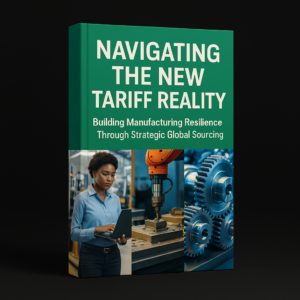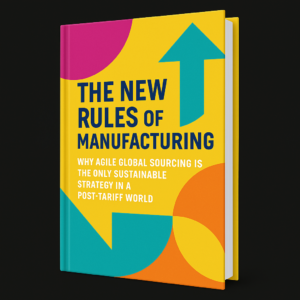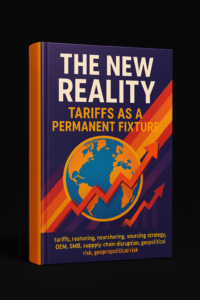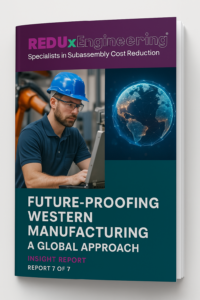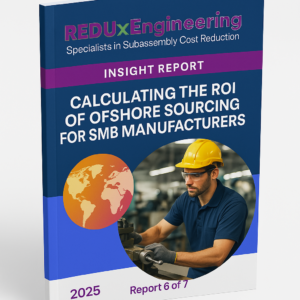
After sharing a series of insights and success stories, we often ask a simple question: “Is it worth a brief look to see if similar savings can apply to your business?” This strategy paper outlines our engagement model and philosophy – specifically, how REDUx Engineering makes it easy and risk-free for clients to explore cost-saving opportunities. We’ll explain our no-upfront-cost approach, what a typical initial assessment involves, and how we ensure that you maintain full control over decisions. Think of this as a guide to “trying before you buy” when it comes to manufacturing optimization.
The No Upfront Cost, No Obligation Model
From day one, REDUx Engineering has operated on a performance-based model. We do not charge consulting fees, retainers, or any kind of upfront cost for our standard engagement. Instead, our compensation comes as a share of the savings we actually achieve for you. If we find no savings, you pay nothing. If we implement changes that save $X, we receive an agreed percentage of $X as our fee. This alignment of incentives is core to our business.
Why do we do this? We believe that it eliminates risk for our clients and builds trust. You should never feel stuck paying for advice that doesn’t pan out. By putting our own skin in the game, we send a clear message: we are confident in our ability to deliver results. This model flips the traditional consultancy approach on its head. Rather than “billable hours,” our currency is delivered value. Clients have told us this gave them the confidence to engage us initially, because it removed the fear of wasting money on another consultant. In essence, we invest our time and expertise upfront, and you invest your time. If nothing fruitful comes of it, we part as friends and you’re no worse off (in fact, usually you gain some free insights). If we do succeed, both parties win.
What Our Free Assessment Involves
When a manufacturer shows interest in exploring opportunities, the first step is typically a 20–30 minute discovery call (or meeting) where we discuss your products, challenges, and goals. We might ask questions like: Which parts or assemblies are the most expensive in your BOM? Have any costs been rising recently? Are there quality or lead time issues with certain suppliers? Your answers help identify one or two candidate components for a deeper look.
From there, we perform a complimentary cost assessment on the agreed-upon part(s). This usually includes:
- Design Review: Our engineers will examine drawings, 3D models, or specifications. We’re looking for complexity that might be simplified – e.g., tight tolerances, over-engineered features, or suboptimal material choices that drive cost. We often do this independently, but sometimes a short follow-up call with your engineering team yields great insights (after all, you know the part’s function best).
- Manufacturing Process Analysis: We consider how the part is made today. Is it machined from solid when it could be near-net formed? Is it assembled from many pieces when a modular design could combine them? We’ll leverage our knowledge of alternate processes (casting, molding, extruding, stamping, etc.) to envision if a cheaper production method exists.
- Cost Driver Breakdown: Using our internal database of cost factors (e.g., machine cycle times, material prices, labor rates in various regions), we break down the part’s approximate cost structure. This helps pinpoint which element – material, labor, overhead, mark-up – is contributing most to the cost. For instance, we might find that 60% of the cost is material, indicating an opportunity to switch alloys or use scrap-efficient blank sizes. Or we might find that a supplier’s quoted price has an excessive margin, suggesting that competitive sourcing could significantly lower it.
- Supplier Network Consultation: Quietly (and with full confidentiality), we may approach one of our known suppliers in low-cost countries to get a sanity-check quote or feasibility feedback. We do this without revealing your company identity or any proprietary info – it’s more about validating “could this part be made for roughly $XX in country Y?” The goal is to have real datapoints on offshore cost potential, not just theoretical.
After this analysis (which typically takes us 1-2 weeks, depending on complexity), we compile our findings. We’ll present you with an assessment report highlighting: a) current state cost drivers, b) potential modifications or sourcing changes, and c) estimated new cost if those changes are implemented (with rationale and any data to back it).
Crucially, this report is yours to keep. We encourage clients to view it as an objective second opinion. There is no obligation to move forward with us at that point. Often, the findings will strongly suggest a course of action – but it’s your decision whether to pursue it, either with REDUx’s help or even on your own.
Maintaining Control and Optionality
We understand that handing over a part of your supply chain to an outside partner can be daunting. That’s why we operate in a transparent, step-by-step fashion. After delivering the initial assessment, we typically discuss it with you and your team. If you’re interested in proceeding, we then outline a project plan, timeline, and define the commercial terms (i.e., the savings share or success fee structure) clearly in writing. You always have the final say before we execute any change.
During implementation, whether it’s a supplier change or a design tweak, we work closely with your internal stakeholders – engineering, procurement, quality, etc. You are kept in the loop on supplier selection (in fact, we’ll usually present a shortlist of 2–3 options with pros/cons) and you approve the final choices. Many clients appreciate that we handle the heavy lifting (communications across time zones, logistics planning, etc.), but we ensure it never feels like you “lost control” of your own product. It remains a collaboration.
It’s also worth noting that our agreements are flexible. If circumstances change or you decide to pause a project, there are typically easy “off-ramps.” Because we don’t lock anyone into long-term fees and our earnings are proportional to delivered savings, our incentives remain aligned throughout.
Why “Soft Ask” – Our Philosophy on Selling
By now, you’ve noticed our style is consultative and low-pressure. This isn’t just a style choice; it’s rooted in our firm belief that the value should speak for itself. If REDUx Engineering is a good fit for your needs, it will be evident from the data and insight we provide. We see our outreach (emails like these, white papers, etc.) as a way to educate and inform. When a potential client is ready to engage, it’s often because we’ve established credibility and demonstrated understanding of their challenges – not because we pushed them into a corner.
This “soft ask” philosophy also extends into how we run projects. We aim to build long-term relationships. In fact, several of our biggest success stories started with a small pilot project – one troublesome part. After we proved ourselves, that client gave us more and more components to optimize, and years later we’re still working together on strategic sourcing initiatives. We prefer that organic growth over trying to boil the ocean on day one.
In summary, REDUx Engineering invites you to explore opportunities with no downside. We de-risk the process financially through our performance-based model, and we strive to make it as easy as possible to “test the waters” through a free initial assessment. The question we pose to manufacturers – “Is it worth a look?” – stems from confidence in what we can deliver and a genuine desire to help. More often than not, that look turns into tangible gains. But even when it doesn’t, we ensure you walk away with new knowledge about your operations. In that sense, an engagement with us is always a win-win proposition.
Making it Safe, Flexible and Successful:
REDUxEngineering can be your “Managed Offshore Sourcing” department, providing SMB manufacturers the on-demand specialized expertise, pre-vetted CM partners. multiple international destinations, language skills, long-term regional relationships and on-site QA staff needed to safely, efficiently, and quickly tap into the savings that diversified global sourcing has delivered to multi-nationals for decades. Hop on our calendar for a 20 minute briefing: https://app.apollo.io/#/meet/david_orton_b36 , or email us with times that work for you: [email protected].
Bibliography (Strategy Paper 4):
- REDUx Engineering – Engagement Model Overview. (Company Presentation, 2025) – Details on the performance-based (contingency) fee structure and client case studies of the no-risk pilot approach.
- REDUx Engineering Website – “How It Works – No Fees, No Risk.” (reduxengineering.com) – Webpage explaining that REDUx only earns when savings are realized.
- Harvard Business Review – “Aligning Consultants’ Incentives with Clients’ Interests.” (2020) – Discusses the benefits of performance-based consulting engagements in driving successful outcomes for clients.
- McKinsey & Co. – “Small Bets, Big Payoffs: Starting Supply Chain Transformations Pilot-First.” (2021) – Advocates for pilot projects in supply chain improvements, highlighting how a single-component focus can demonstrate value and build buy-in.
- NAM (National Assoc. of Manufacturers) Blog – “Manufacturing as a Service: New Models” (2024) – Features REDUx Engineering as an example of a service provider using innovative, low-risk engagement models to help manufacturers reduce costs.
- Gartner Research – “Outsourced Manufacturing Partnerships – 2025 Guide.” (2025) – Recommends performance-based partnerships and emphasizes evaluating consultants via a pilot project; notes that such approaches often yield 5-10x ROI for manufacturers in successful cases.

